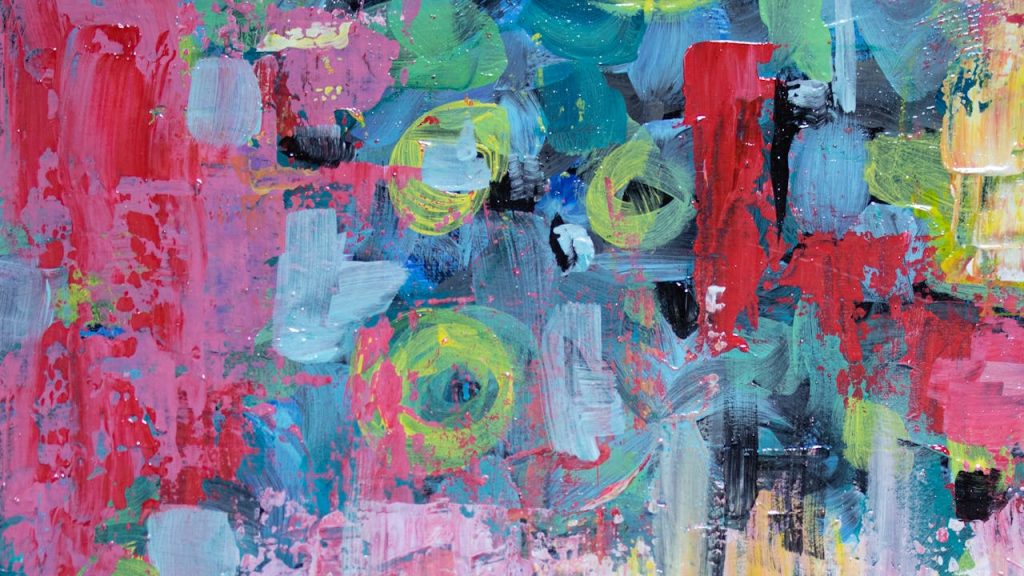Table of Contents
Fauvism: The Rebellion of Color and Emotion
Introduction
Emerging at the turn of the 20th century, Fauvism was one of the first avant-garde movements that boldly broke away from the traditions of European academic painting. Known for its vivid color palette and expressive brushwork, Fauvism was short-lived but profoundly influential, shaping the future of modern art. Despite its brevity, Fauvism’s bold experimentation and focus on pure, emotional expression through color laid the groundwork for future movements like Expressionism and Abstract Art. In the words of its leading figure, Henri Matisse, the Fauvist artist seeks to express “a sense of calm and purity” through intense colors, aiming to evoke emotional responses without relying on realistic depictions.

Photo by Pexels
Origins of Fauvism
The Fauvist movement, or “les Fauves” (French for “the wild beasts”), emerged in France around 1905, with its foundational works exhibited at the Salon d’Automne in Paris. The critic Louis Vauxcelles famously coined the term “Fauves” in response to the artists’ shockingly vibrant and seemingly chaotic use of color, comparing the artists to “wild beasts.” Fauvism was influenced by Impressionism’s use of light and color, as well as Post-Impressionists like Vincent van Gogh and Paul Gauguin, who pushed the boundaries of representational color to express psychological depth.
However, Fauvism diverged significantly from its influences, as the Fauvists pursued color for color’s sake. Rather than capturing the effects of light or adhering to naturalistic representation, the Fauves used color to communicate emotion directly, favoring simplicity and spontaneity over detail.
Key Characteristics of Fauvism
- Intense, Unnatural Color: Fauvists employed exaggerated colors that did not correspond to reality. They often used pure, vibrant pigments straight from the tube, disregarding traditional color schemes. For example, Matisse’s Woman with a Hat (1905) features unnatural pinks, greens, and oranges, creating a sense of energy and vibrancy unanchored by naturalistic expectations.
- Expressive Brushwork: Fauvist artists used broad, visible brushstrokes to convey a sense of immediacy and emotional intensity. This was an intentional departure from the meticulous brushwork of academic painting, allowing for a more dynamic and raw expression.
- Simplification of Forms: The Fauvists reduced forms to their basic outlines, often flattening the perspective. This simplification allowed them to focus on color and shape as the primary elements of expression, giving their works a decorative, almost childlike quality. André Derain’s Charing Cross Bridge (1906) exemplifies this style with its bright, blocky colors and distorted forms.
- Emphasis on Emotional Impact: More than any specific style or technique, Fauvism is unified by its dedication to evoking emotional responses. The Fauvists believed that color could communicate more directly than form, using it to bypass intellectual interpretation and reach the viewer’s emotions immediately.
Influential Artists and Works
- Henri Matisse: Often regarded as the leader of the Fauves, Matisse’s work embodies the spirit of Fauvism through its joyous, liberated use of color. His painting The Joy of Life (1905-1906) is a celebration of life’s pleasures, with figures intertwined in vibrant landscapes of pink, yellow, and green, abandoning realistic proportion and perspective.
- André Derain: Matisse’s close friend and collaborator, Derain contributed significantly to Fauvism’s development. His London Bridge series, painted in 1906, uses Fauvist techniques to reinterpret the industrial cityscape of London. With bold colors and simplified forms, Derain’s works showcase a non-realistic approach to depicting the city, creating a sense of movement and vitality.
- Maurice de Vlaminck: Known for his intense, almost violent use of color, Vlaminck’s works are some of the most emotionally charged of the Fauvist oeuvre. His landscapes, like The River Seine at Chatou (1906), are marked by fiery reds, blues, and greens, illustrating his belief in the power of color to convey raw emotion.
The Influence and Legacy of Fauvism
Though Fauvism lasted only until about 1908, its impact on modern art was profound. By freeing color from its descriptive role, the Fauvists challenged the very foundation of representational art. Their emphasis on color and emotion paved the way for the Expressionist movements in Germany and Austria, where artists like Ernst Ludwig Kirchner and Wassily Kandinsky would explore similar themes of emotional and spiritual expression through bold colors and abstract forms.
Fauvism also played a crucial role in the development of abstract art, as artists increasingly moved away from representational forms. Matisse, in particular, continued to explore color and shape throughout his career, influencing later generations of artists with his collage work and experiments in abstraction. Additionally, Fauvism had a lasting impact on American modernism, inspiring artists like Marsden Hartley and Milton Avery, who incorporated Fauvist color theory into their own explorations of abstraction and landscape.
Conclusion
The Fauvist movement was a radical exploration of color, emotion, and simplicity, breaking new ground in the art world and inspiring future generations to push the boundaries of expression and abstraction. Fauvism’s audacious use of color and emphasis on emotional immediacy liberated artists from the constraints of naturalistic representation, allowing them to communicate more directly and personally with the viewer.
Although the movement was brief, Fauvism’s legacy lives on in the works of countless artists who continue to draw on its revolutionary techniques and spirit of fearless experimentation. Today, Fauvism is celebrated not only as a turning point in art history but as a testament to the power of color and emotion in shaping our understanding of art itself.


No responses yet